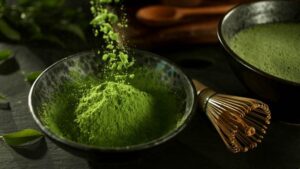“Koji, Miso, and Tamari: The Three Engines of Japanese Umami”

From the spark of koji to the finish of tamari, discover how Japan’s fermentation trinity powers modern flavor.
The Umami Engine: Understanding Koji, Miso, and Tamari
Japan’s culinary soul runs on fermentation — an ancient alchemy where time, microbes, and human touch transform simple ingredients into layers of deep, living flavor.
At the heart of this transformation lies a trio that chefs around the world are beginning to see not just as condiments, but as engines of umami: Koji, Miso, and Tamari.
1. Koji – The Spark Plug of Flavor
Koji is often described as the “starter,” but that doesn’t quite capture its magic. Think of it instead as a spark plug — the ignition that brings ingredients to life.
Made by inoculating rice or barley with Aspergillus oryzae, this humble mold breaks down starches and proteins into natural sugars and amino acids, unlocking sweetness and savoriness hidden within the raw materials.
In Western terms, koji plays a similar role to a sourdough starter or dry-aging catalyst — it transforms, tenderizes, and teases out depth.
A spoonful of salt koji in a marinade can turn simple chicken into a dish with quiet complexity.
Tagline: “Koji unravels. The ingredient speaks.”

2. Miso – Japan’s Fermented Bouillon
If koji is the spark, miso is the broth that keeps on giving. A blend of koji, soybeans, and salt aged to perfection, miso can be seen as Japan’s version of a natural bouillon or demi-glace — a base that lends body, warmth, and umami to everything it touches.
White miso brings creamy sweetness, while red miso adds bold, caramel-like intensity. But no matter the variety, miso’s purpose remains the same: to deepen and bind flavors.
In modern kitchens, chefs are whisking miso into salad dressings, butter, and even caramel sauce — because, simply put, it makes flavor taste more like itself.
Tagline: “One spoon, infinite depth.”

3. Tamari – The Umami Espresso
Tamari, often mistaken for soy sauce, is something far denser — the concentrated liquid drawn from miso during fermentation.
It’s naturally gluten-free and extraordinarily rich, like the espresso shot of soy flavor.
Use it not as a seasoning but as a finisher: a few drops over grilled steak, roasted vegetables, or even vanilla ice cream bring a sense of shadow and shine.
Tamari doesn’t shout; it paints.
Tagline: “A single drop, a shadow of flavor.”

How They Work Together
| Element | Role | Western Analogy | Culinary Use |
| Koji | Fermentation catalyst | Spark plug / enzyme starter | Marinades, brines, base for miso |
| Miso | Fermented base | Bouillon / demi-glace | Soups, sauces, dressings |
| Tamari | Concentrated essence | Espresso / balsamic reduction | Finishing glaze, drizzle, dip |
Together, they form Japan’s umami engine — a cycle of transformation that keeps flavors alive and evolving.
Quick Kitchen Inspirations
- Koji Butter: Unsalted butter + salt koji = a fermented compound butter that lifts any dish.
- White Miso Vinaigrette: White miso + rice vinegar + olive oil — creamy, balanced, and ready for salads or grilled fish.
- Tamari Caramel: Tamari + honey, gently reduced — a glossy glaze that bridges sweet and savory.
The Final Note
What makes these ingredients extraordinary is not only their flavor, but their philosophy: transformation through patience.
In a world chasing speed, Japanese fermentation teaches us that the deepest taste — like the richest life — comes from letting things take their time.









